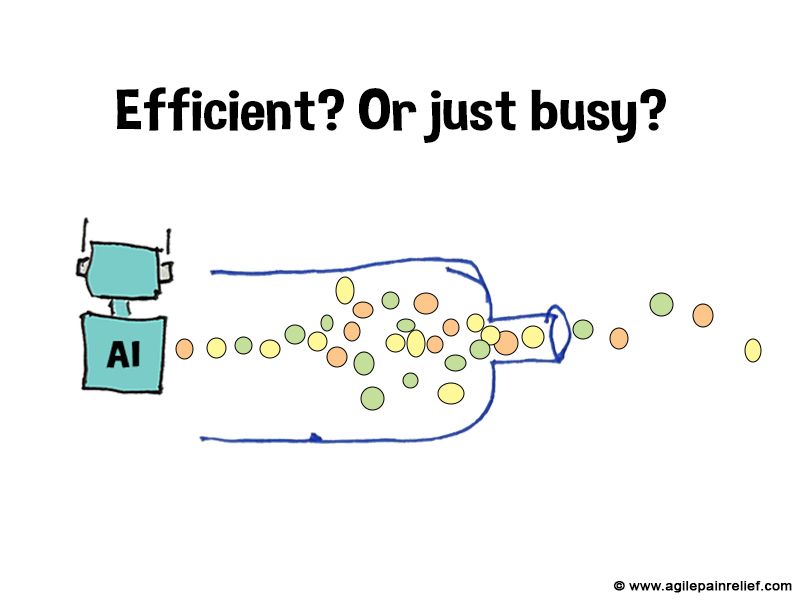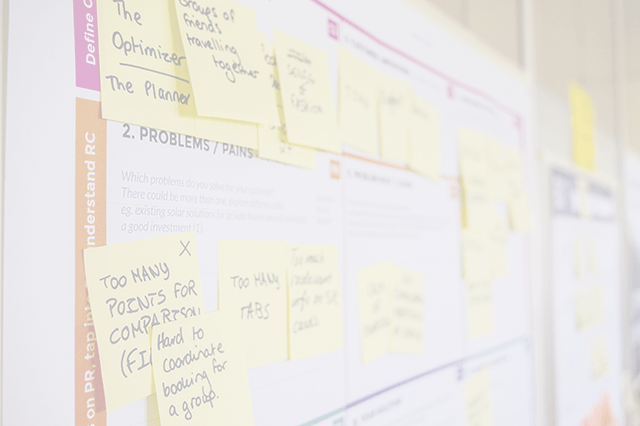Will AI Make the Federal Government More Efficient or Just More Busy?
The Prime Minister of Canada told federal government to become more efficient and cut their budgets, and it’s suggested that artificial intelligence can play a key role.[1]
I know AI, I have seen the inside workings of many government departments, and I know something about efficiency. All politics aside (no, really), I have concerns. Using AI isn’t a bad idea, but it needs to be approached in a responsible way. Especially if you’re the federal government.
Oxford English Dictionary: efficiency (-shensi) n. State or quality of being efficient; (Mech. & Phys.) ratio of useful work done to total energy expended or heat taken in;
Be careful, a focus on efficiency can make systems worse. We save a few dollars, but slow down the whole system. “Do more with less” reduces quality and eventually costs more.
There are two major kinds of “AI” in use today. GenerativeAI and PredictiveAI. Generative AI is the tool most of us are familiar with (ChatGPT, Claude, etc). We write some text, and the model generates a response. PredictiveAI attempts to predict future events based on past data — for example, in an emergency department, deciding who needs hospital admission for pneumonia and who can recover at home.
Can either of these tools help make the federal government more efficient?
- GenAI is excellent at creating a large body of text or other content quickly. GenAI promises that it will speed up many tasks, allowing each worker to get more stuff done.
- PredictiveAI makes many promises, including automating decision-making.
Will either of these make departments more efficient? Assuming GenAI made everyone faster (it doesn’t) and that it didn’t make mistakes (it does), we expect GenAI to speed up departments magically so they can generate more “stuff”. Lots of stuff makes it seem like people are busy. Busy might appear to be efficient, but those aren’t synonymous.
The problem is the bottlenecks. You know them from the daily commute, that place on the highway where it always slows down. The only place to improve is the bottleneck itself (see Theory of Constraints for more details). So even if GenAI does speed up individual workers, unless that person is the bottleneck, the most likely outcome is that it will make the logjam worse.

Even if we magically fixed one bottleneck (example: issuing passports), there might be consequences (e.g. issuing emergency travel documents for Canadians stuck overseas). Without a clear set of priorities, we might make the whole system worse.
I’ve seen inside many federal government departments, agencies, and crown corporations. I’ve seen departments where the work has already been approved. The work item should take 15-20 days of working time, and it spends 75-90 days waiting for additional management decision-making. In this case, the bottleneck is the speed of decision-making and the lack of autonomy. All but the smallest decisions need to get approval from a senior manager; this is a side effect of a risk-averse culture. The manager demands more information to make each decision, so team members are pulled off their current work to find that information. The number of decisions managers are expected to make is overwhelming, so many vital decisions wait on their desks for weeks or months. If people use GenAI simply to create more quantity rather than quality, it will increase the number of decisions that managers need to make, snowballing the problem.
If decisions are waiting for months, can we responsibly use PredictiveAI to speed the process? In theory, maybe. But in practice, PredictiveAI makes decisions based on past data, and that can lead to poor predictions when the training data was incomplete, or it was biased, or future conditions don’t match the past. Even if PredictiveAI was good at making forecasts of what will happen in thousands of cases (it isn’t), that predictive value is useless at making each single decision (e.g. Should we send this specific patient home?) In these cases, it’s no better than flipping a coin.[2]
Finally, the focus on efficiency creates other problems. When everything is about efficiency, the focus is primarily on the cost of the work. Missing from the equation: are we doing the right job? Is the work being done well? Efficiency creates systems that are fragile, with many handoffs that are slower at delivering results.
Over years of making mistakes, I’ve learned what does work:
- Define what results matter and have clear priorities. Most groups can sustain only three priorities, max, at one time. Overall priorities matter, so when there is a conflict it needs to be clear which item(s) must be finished first.
- Study the flow of the system. The easiest way is to build a Kanban board and see where work gets stuck or spends time waiting. Find the bottleneck and consider how to improve throughput there.
- Push decision-making down to people doing the work. Most decisions are reversible, and so are lower cost. Reversible choices can be made with less information and less authority… and, therefore, less delays.
Can GenAI help? Perhaps once we’ve found the bottleneck. Some work can be sped up with GenAI but most valuable work still requires a thoughtful person. Instead of chasing magic promises, bottlenecks are most often solved by asking people to help out with the work.
This isn’t a one-time fix. No team or organization stays the same forever, and that is particularly true in government departments. For the best chance of success, they will need to keep measuring the flow and running experiments. Only then can they find opportunities to use GenAI to legitimately improve efficiency.
Footnotes
Image attribution: Agile Pain Relief Consulting (August 2025)

Mark Levison
Mark Levison has been helping Scrum teams and organizations with Agile, Scrum and Kanban style approaches since 2001. From certified scrum master training to custom Agile courses, he has helped well over 8,000 individuals, earning him respect and top rated reviews as one of the pioneers within the industry, as well as a raft of certifications from the ScrumAlliance. Mark has been a speaker at various Agile Conferences for more than 20 years, and is a published Scrum author with eBooks as well as articles on InfoQ.com, ScrumAlliance.org and AgileAlliance.org.
